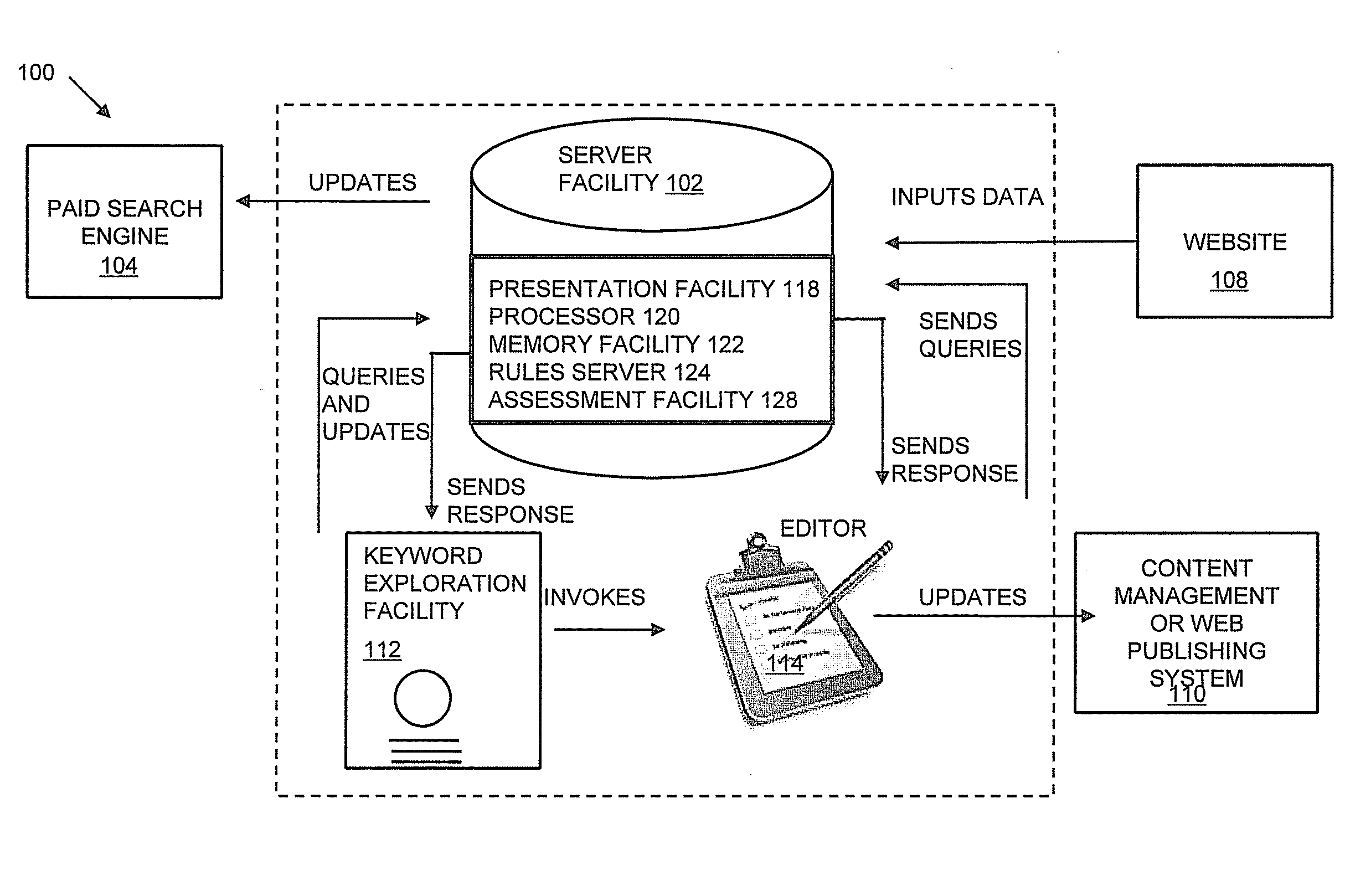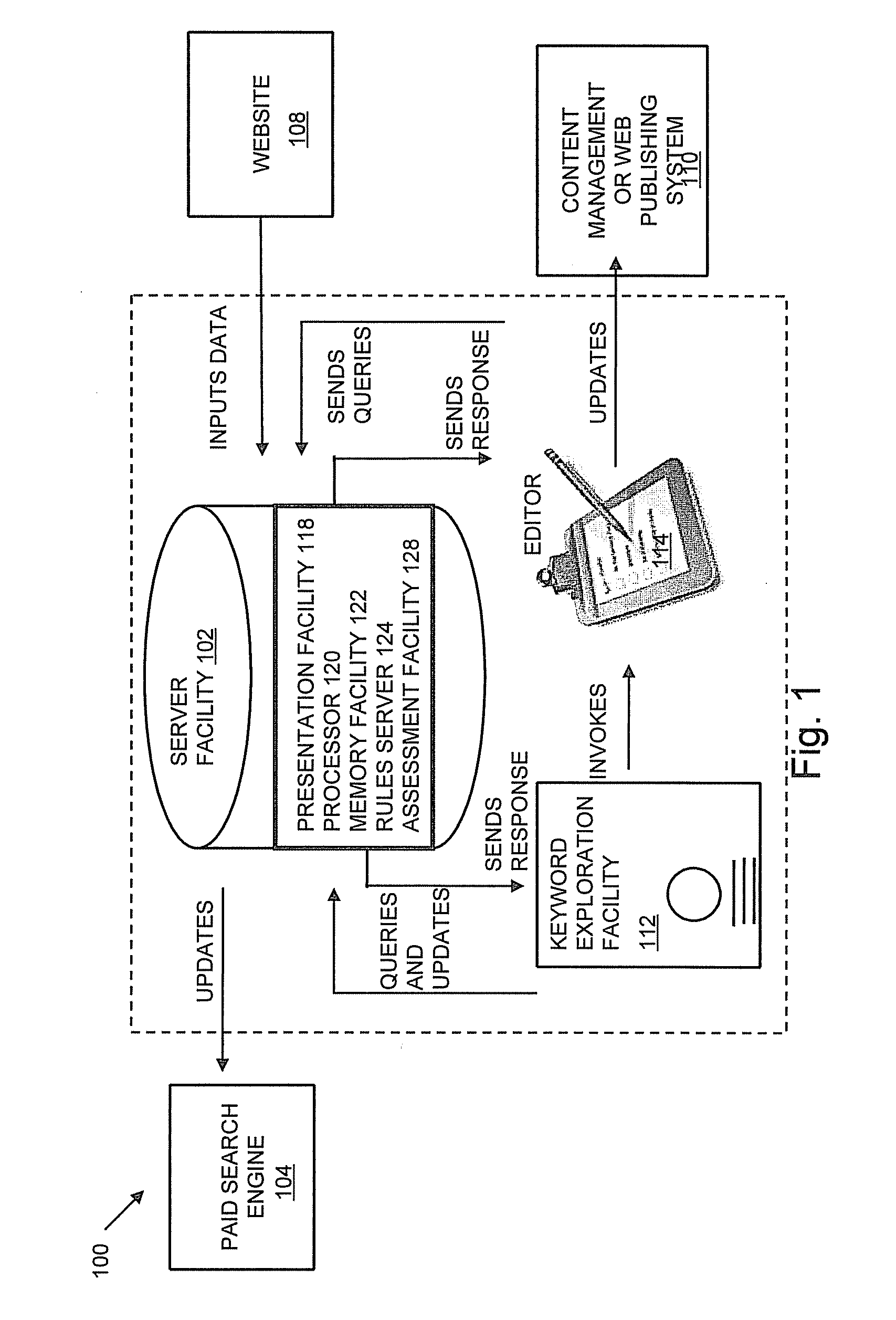Keyword discovery tools for populating a private keyword database
a technology for private keyword databases and discovery tools, applied in the field of search and manipulation of keyword data, can solve the problems of reducing the quality of keyword data, so as to facilitate workflow, generate a high amount of advertising traffic, and improve quality scor
- Summary
- Abstract
- Description
- Claims
- Application Information
AI Technical Summary
Benefits of technology
Problems solved by technology
Method used
Image
Examples
Embodiment Construction
)
[0133]When advertising on the Internet was first made available around 1998, it was not initially a Pay-Per-Click system; rather, it was a pay-per-impression system. Advertisers had to contact a sales representative, come up with a list of words, and then negotiate a certain dollar amount to pay for every thousand times the advertisement was displayed, also known as a Cost Per Thousand (CPM—where M is the Roman Numeral for 1000). For example, a CPM of $20 would mean that the advertiser agreed to pay $20 for each thousand times the advertisement was displayed, regardless of whether or not a user actually clicked on the advertisement. Around 2002, the process migrated to a self-serve, Cost-Per-Click system where ad impressions became free, but clicks cost money. Advertisers could directly log into a web-based advertising system to specify their own keyword lists, write their own ads, view statistics, generate reports, pay bills, and more. The price paid by the advertisers for each cl...
PUM
 Login to View More
Login to View More Abstract
Description
Claims
Application Information
 Login to View More
Login to View More - R&D
- Intellectual Property
- Life Sciences
- Materials
- Tech Scout
- Unparalleled Data Quality
- Higher Quality Content
- 60% Fewer Hallucinations
Browse by: Latest US Patents, China's latest patents, Technical Efficacy Thesaurus, Application Domain, Technology Topic, Popular Technical Reports.
© 2025 PatSnap. All rights reserved.Legal|Privacy policy|Modern Slavery Act Transparency Statement|Sitemap|About US| Contact US: help@patsnap.com



